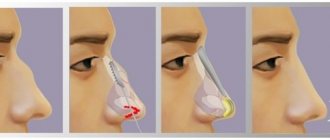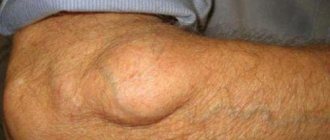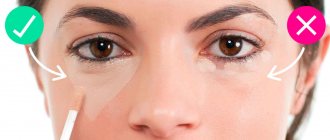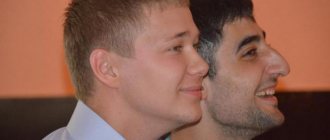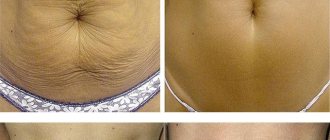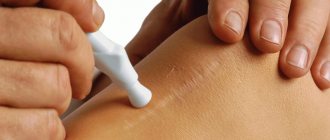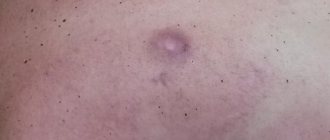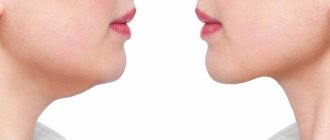Degrees of buttock drooping
The process of prolapse of the soft tissues of the buttocks is conventionally divided into:
- preptosis: when a fold of skin begins to form at the border of the buttock and thigh;
- ptosis itself: a fold is formed and the tissue of the buttocks begins to hang over the skin fold.
If we talk about filament lifting, it is effective only in the case of preptosis. In this case, the threads allow you to slightly lift the skin and subcutaneous fatty tissue, create volume in the upper part of the buttocks, and prevent further tissue sagging.
In the case of ptosis, they can only provide a temporary effect. The risk of filament lifting complications increases, such as thread cutting and the formation of continuous skin retractions in the places where it passes.
Three reasons for shapeless buttocks
1. Sedentary work The gluteal muscles are inactive for a long time, lose the habit of working and lose tone.
Tip: while sitting on a chair, tense your buttocks for 7-10 seconds in a series of 20-25 repetitions.
2. High heels In high heels, the center of gravity of the body is transferred forward. And this leads to changes in posture, imbalance of muscles in general and inactivity of the gluteal muscles in particular.
Tip: Change your shoes throughout the day or wear heels on a non-daily basis.
3. Running on a treadmill Yes, oddly enough. In real-world running conditions, the gluteal muscles work by pushing the foot back to propel the body forward. The treadmill does this work for you, so the muscles in your buttocks and hamstrings are forced into inactivity. In addition, steps become shorter on a treadmill. This causes excessive tension in the quadriceps and weakens the gluteal muscles.
Tip: Increase the incline of the treadmill.
Fitness instructors tell and show how to shape your buttocks using special sets of exercises:
3 minute butt workout
Fitness at home: How to tighten your butt?
Fitness at home: an effective exercise for the buttocks “Skater”
Don't be lazy, and your efforts will be rewarded!
Contraindications
You shouldn’t rely too much on the magic phrase in thread lift advertising that the method has virtually no contraindications. They exist, just not as strict as in the case of surgery.
These include:
- pregnancy;
- formation of keloid or hypertrophic skin scars in response to damage;
- autoimmune diseases;
- colds, infectious diseases;
- diseases of the skin and subcutaneous tissue of any location;
- allergy;
- blood diseases, disorders of blood clotting processes;
- oncological diseases;
- diabetes.
Price and clinics
The cost of the procedure under consideration is quite high, however, due to the pronounced positive effect obtained and the speed of this operation, the demand for filament lifting remains high. The price of the procedure is about 100,000-120,000 rubles. Its duration is 1-1.5 hours.
This procedure is performed in most clinics performing plastic surgery in large cities: Moscow, St. Petersburg, Yaroslavl, Nizhny Novgorod.
What types of threads can be used
Polypropylene threads
Aptos threads are most often used. They have microscopic notches that allow you to securely fix the tissue in a certain position. Polypropylene threads do not cause allergies or rejection reactions. They do not dissolve.
Absorbable polylactic acid sutures
Polylactic acid gradually breaks down in tissues to form lactic acid. And lactic acid, in turn, has a stimulating effect on metabolism and the synthesis of collagen and elastin. After the thread is completely absorbed, a framework of collagen and elastin remains in its place, which prevents the development of tissue prolapse.
In addition to revitalizing, polylactic acid threads also have a mechanical effect. They have notches for fixing tissues in a taut position.
If we consider that polylactic acid threads dissolve within 8-9 months, then we can confidently say that they have a prolonged lifting effect.
Video: Aptos Threads
Mesothreads
If the first two types of threads are suitable for correcting drooping buttocks, then lifting with mesothreads is used only for the prevention of ptosis. They do not have notches, therefore they cannot provide a significant degree of tension and lifting of tissues. Mesothreads consist of polydioxanone and are coated on top with polyglycolic acid.
When absorbed, mesothreads stimulate the production of collagen and elastin in the skin and the creation of a frame that will support the skin in a certain position.
Mesothreads are good for those who are satisfied with their own appearance and want to maintain their shape for a long time.
For photos before and after hand plastic surgery, see the article - brachioplasty.
Learn all about the reasons why your butt may be less than ideal and watch the video: Brazilian butts here.
Indications for buttock lifting and correction
Before deciding on a specific procedure, every woman should know in what cases a lift is indicated. One way or another, any manipulation affects health, and also has its contraindications. So, the indications are as follows:
- Wide and voluminous buttocks - this shape and size can be due to a hereditary predisposition, as well as due to rapid weight gain. The most optimal correction option is surgery.
- Wide and flat buttocks - this shape is usually inherited. Correction is achieved by removing areas of fat, lipofilling procedures and introducing implants to add volume to the buttocks.
- Sagging and flat buttocks - this shape is a consequence of age-related changes or sudden weight loss, as well as the heredity factor. Correction is carried out using implants, lipofilling, and buttock lifting using surgical and/or non-surgical methods.
Alternative lifting methods are also used by those patients who are unable to eliminate sagging skin with regular sports exercises. In rare cases, patients who are simply not satisfied with the contours of this part of the body resort to changing the shape and size of the buttocks.
How the procedure is performed
Local anesthesia is used for the procedure. It takes from 30 to 60 minutes. The place where the threads are inserted is treated with antiseptics. Threads are inserted through punctures or small incisions in the skin using needles or cannulas.
After all the threads have been inserted, they are tensioned and their ends are trimmed. Since anesthesia is not used during the procedure, the patient can observe the process of tightening the threads and determine the degree of their tension and the appearance of the buttocks, which is obtained.
After removing the cannulas and cutting the ends of the threads, the puncture sites are treated with an antiseptic and sealed with adhesive tape. It is imperative that cold is applied to the site where the threads are inserted for about an hour to reduce tissue swelling and to prevent bruising.
Options for how to get rid of buttock ptosis without surgery
You can tighten your butt and make it more rounded using conservative methods.
It is permissible to combine them, but they will be more effective in the early stages of ptosis:
Physical exercise. These are squats with a barbell, swinging your legs back from a standing position on all fours. There are also exercise machines that specifically target the gluteal muscles. With their help, you can not only achieve tightening, but also increase volume.
- Special underwear for visually enlarging the buttocks. These are elastic shorts, graces, bodysuits that tighten sagging tissue. But the buttocks will look seductive as long as the underwear is on the body. After removal, the ptosis will return immediately.
- Filament lifting. This is a procedure in which support threads are inserted into the tissue of the buttocks. They are placed under the skin using cannulas accompanied by local anesthesia. A tightening and modeling effect is possible with a small volume of soft tissue. The procedure is done in 1 hour, after which a short rehabilitation is needed, since the buttocks will be swollen and painful, and bruises will remain on the skin for some time. The effect of filament lifting will last for 3 - 5 years.
- Mesotherapy. These are injections of drugs that tighten and smooth the skin. They contain hyaluronic acid and other components that rejuvenate it. Denser fillers are also used to correct the contours of the buttocks and their volume. The result of several procedures, carried out with weekly pauses, lasts up to 6 - 12 months.
- Vacuum massage. Can be manual or hardware. The procedure affects the tissue due to variable pressure. It helps get rid of excess fat, cellulite, remove excess fluid, tighten muscles, and even out the skin. First, a special product is applied to the surface of the buttocks, then they work with silicone cups or a vacuum apparatus. Even more effective is LPG massage, which combines vibration and rollers.
- Radio wave lifting. This electromagnetic effect is carried out using a device. In 3-5 sessions it will get rid of cellulite, ptosis, and sagging skin of the buttocks.
- Myostimulation. During the procedure, the tissue is exposed to a pulsed current of a certain frequency and power. It causes muscles to contract and tighten, thins the layer of fat, and rejuvenates the skin in a few sessions.
For information on what exercises will help strengthen your buttocks, watch this video:
Recovery period
During the rehabilitation period after the procedure, a number of restrictions must be observed in order to:
- avoid cutting threads and redistributing tissues with the formation of longitudinal tubercles and depressions;
- prevent infection of skin puncture sites;
- reduce swelling of the skin and prevent swelling from increasing.
Typically, restrictions must be observed for at least 20 days, since this is how long it takes for a connective tissue capsule to form around the threads. The entire recovery period can take up to one and a half months.
What to do:
- reduce physical activity, avoid significant range of motion in the hip joints, sudden movements with significant muscle effort (sharp lifting of something heavy, for example);
- do not massage the area of the procedure, do not sit on anything hard;
- treat puncture sites with antiseptics;
- in the first days, cold can be applied to the buttocks;
- Any thermal procedures are not recommended, not only visiting the sauna and solarium, but also taking a hot bath.
If pain bothers you, you can take painkillers as needed.
Rehabilitation after surgery
Naomi, a liposuction clinic in Moscow, performs any area and various types of liposuction. Liposuction is performed on the face, riding breeches, cheeks, back, abdomen, double chin, for men, knees, thighs, calves, legs, arms, buttocks, neck
After gluteoplasty with sutures, the threads are removed no earlier than 10-14 days after the operation.
When using self-absorbable threads, their subsequent removal is not required. The patient is also required to comply with the following measures:
Use of medications. Since the manipulations are carried out on a fairly mobile area, patients experience pain during the postoperative period. To reduce, as well as reduce the likelihood of developing an inflammatory process, special medications are used. After the operation, you should wear compression garments for 2 months, which helps accelerate the formation of the capsule around the implant and subsequently ensures immobility. In the first few days, it is recommended to remain in bed and be under the supervision of medical personnel. This will help avoid various complications. Patients often experience a slight increase in body temperature, which requires timely taking adequate measures. When installing implants, the patient is prohibited from sitting for 1 month. You will also need to stop sleeping on your back and limit physical activity on the gluteal muscle. Otherwise, the implant may shift, as well as change its position. As a result, the buttocks look sloppy and there is asymmetry, which requires repeated surgical intervention. If a seroma forms around the implants, elimination is required. Special drains are used to pump out accumulated fluid. In the postoperative period, the patient is advised to follow a diet. You need to give up fatty, high-calorie foods, sweets, baked goods and other products
It is important to follow proper split meals. To speed up recovery, you should also completely stop or limit the consumption of alcoholic beverages and smoking.
The rehabilitation period after surgery is 4-6 weeks. After this time, the patient can return to normal life, and also gradually apply physical activity. You are allowed to start playing sports no earlier than after 2 months.
When installing implants, intramuscular injections into the buttock area are prohibited. The restriction is permanent. Injections are allowed only in the thigh or other areas.
Buttock surgery is a popular manipulation. However, it is not for everyone. Before deciding to intervene, it is worth familiarizing yourself with the side effects, limitations and consequences that arise if the recommendations are not followed.
Possible complications
- Thread cutting.
In this case, the threads go deeper into the tissue than they were introduced, and the tissues pulled up by the threads are lowered.
- Thread contouring.
In this case, the threads, on the contrary, move to more superficial layers of tissue and begin to be felt or become visually noticeable under the skin. For the buttocks, unlike eruption, this is a very rare complication.
- Formation of retractions.
It usually occurs in those who have loose buttock tissue. In those places where the threads pass, the tissues are tightened. And in the spaces between the threads they begin to bulge. This picture spoils the appearance very much.
- Thread infection.
As a rule, it requires removal of the threads in order to avoid inflammation of the subcutaneous fatty tissue and subsequent scar formation.
How to perform an operation to correct the inner thighs and the shape of the legs, read the article - leg cruroplasty.
Find out all the details about inner thigh plastic surgery at this link.
For whom hip plastic surgery with implants is indicated and for whom is contraindicated, read here.
Causes
Let's look at the reasons and should there be a second fold under the buttocks at all? In fact there are few of them:
- Weak muscles.
Look at the babies - some of them are so cute, like Shar Peis, with folds, not only on their legs, but also on their arms and other parts of the body. Parents often worry about this, but there is nothing to worry about!
This is the easiest reason to eliminate. All you need is a little willpower, exercise 3 times a week with at least light weights for about an hour and voila, goodbye “Shar Pei face on butt”!The reasons for the appearance of folds in children and in adults are similar - weakened muscles. When muscles weaken, folds like these appear. If a fold appears under the butt, it means that the muscles of the buttocks or back have weakened. This can even happen to those who have a toned butt, but haven’t worked out for a long time.
- Poor circulation.
Generally related to the first point. Often our problem areas are so problematic due to poor blood circulation, which means a small amount of oxygen, which complicates the mobilization and transport of fatty acids.
By the way, we can independently influence (indirectly, of course) the process of local fat burning only through this point (well, also lipolytic injections, but that’s a different story)! True, the effect will be small, but for some it becomes a salvation.
- Curvature of the pelvis . A common symptom: the folds are not symmetrical in a baby under the buttocks. Only a good osteopath will help you here!
- Our heartless genetics.
In people, fat is not always distributed in the places where we would like. Some people store strategic reserves in their riding breeches, others develop fat deposits in the elbows or ankles, and for others, the most problematic place is the stomach.
Moreover, even with weight loss or exercise, this defect may remain:
Screenshot from an old video with Ekaterina Usmanova (she has been actively involved in sports for a couple of years)All this injustice occurs because there are 2 types of receptors in the body (which “transmit” the hormone signal into the cell): alpha and beta. the former are “guilty” of fat accumulation by blocking enzymes necessary for fat burning, but the latter, on the contrary, release the necessary substances for the breakdown of fats and their release into the bloodstream, i.e. they are our assistants in burning fat.
Of course, women have 9 times more alpha receptors than beta receptors in their lower body (legs, buttocks and thighs). That is why these hated fat deposits are the most stable and the last to disappear when losing weight.
Moreover, the figure often seems a little disproportionate: the top, as a rule, loses weight the fastest, but the bottom lags behind and slows down the whole process. Sometimes, in the pursuit of losing weight in a particular place, you can even bring yourself to exhaustion and still have a small breeches or the same crease under your butt!
This photo shows the effect before and after a cupping massage (very, very painful). You can see that visually the folds have become much smaller, although they are slightly visible. Accordingly, the problem was fluid stagnation (blood, lymph, swelling). Add nutrition and sports - and everything will be absolutely fine!
Photos before and after
Types of implants
For plastic surgery, hypoallergenic, safe materials with highly adhesive silicone content are used. The filler provides natural softness and a “memory effect”, as a result of which the shape is restored after physical impact. The products differ from breast prostheses only in their thick shell, which eliminates the possibility of damage. There are no external differences.
Elastomers vary in shape and size. Round implants are implanted into round-shaped buttocks; with them, the contours can become unnatural. Anatomical oval models are used to increase volume while maintaining naturalness, and teardrop-shaped models are used to correct the deformation of pear-shaped butts. The filler volume varies from 140 to 480 ml.
The surgeon, based on the individual characteristics of the woman’s figure, selects the appropriate implants. Here it is important to make the right choice, because with an overly voluminous prosthesis, the butt will turn out to be in the form of lumps and will bulge strongly in any position of the body.
Popular manufacturers of buttock implants are Eurosilicone and Silimed; they provide a lifetime guarantee on their products. Due to its high strength, there is no need to replace it. When ruptured, the silicone does not leak out and the shape does not change.
Advantages and disadvantages of the operation
By comparing different methods, you can weigh the pros and cons:
| View | pros | Minuses |
| Thread lift |
|
|
| Endoprosthetics |
|
|
| Lipofilling |
|
|
The average prices in the capital are as follows:
- Buttock augmentation with implants – from 220 thousand rubles. including endoprostheses
- Lipofilling – from 90 thousand rubles. depending on the volume of your own fat
- Lifting with biothreads from 120 thousand rubles.
Read more detailed information on gluteoplasty in a special section of our forum
